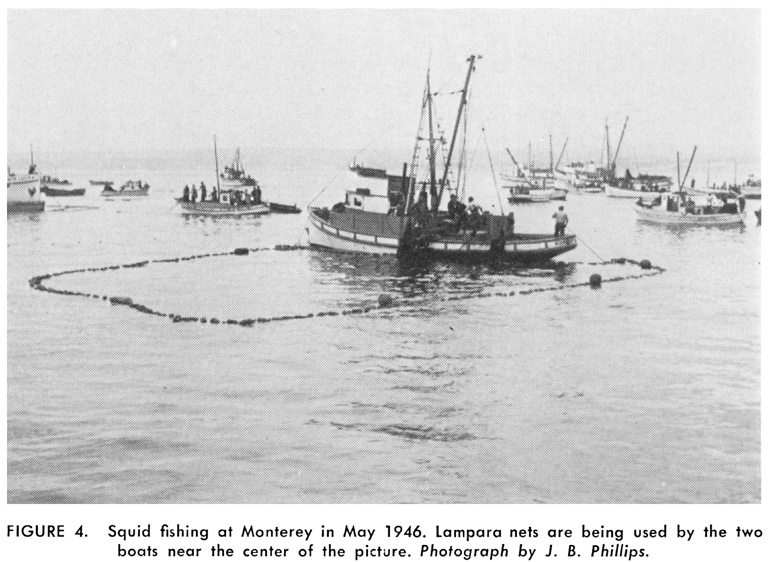Developmental Biology
of the
Market Squid

About
Description
Like other members of the Phylum Mollusca, the adult market squid can be generally divided into three regions: a head, foot, and viscera. The viscera is contained within the mantle which also secretes a shell. The foot region of the market squid has evolved into 8 arms and 2 tentacles equipped with rows of suckers at the end. The squid also has a chitinous beak which houses a typical moluscan radulla. A ventral siphon takes in and excretes water for gas exchange and locomotion. The squid has three hearts—two brachial hearts which pump blood through the gills and a systemic heart which moves blood through the rest of the body (Fields, 1962).

Adult L. opalescens may reach a total size of 28 cm. Males typically have a mantle length of 13-19 cm, while females are generally around 12-18 cm in mantle length (Morris et al., 1980). The mantle of L. opalescens is not fused to the head and its body is four to five times longer than it is wide, with fins equal in both length and width. The eyes and siphon are large and conspicuous. The color of the market squid ranges from translucent-white to brown and will change depending on the behavior of the animal (ARKive, NOAA). Scattered iridophores give the squid its blue-green opalescent tint, while spots of orange-brown chromatophores control changes in pigment expression (ARKive).

Market squid range from the southern tip of Baja California to southeastern Alaska, but are most common between Punta Eugenia in Baja California and Monterey Bay, California (NOAA). They spend most their time in the water column up to depths of 2,600 feet.
Market squid are active predators, commonly feeding on crustacea, fish, and even other juvenile market squid. They forage from the surface to the sea flooring and catch their prey with quick movements, grasping it in their arms. Market squid are an important food source for many predators, including larger fish, sea birds, marine mammals, and humans (Fields, 1962; Morris et al., 1980).
Market squid spawn in huge gatherings in the spring and fall, depending on the location. Males transfer spermatophores filled with sperm into the buccal cavity of the gravid female. One the eggs are fertilized, the female lays egg masses on sandy stretches of seafloor. Each egg mass consists of groups of eggs contained within a jelly capsule membrane (Fields, 1962). The eggs themselves contain a large ball of yolk surrounded by a transparent shell. The embryo begins formation through epiboly, where cells at the top of the yolk mass migrate around to the opposite pole, encapsulating the yolk with a layer of cells in the process (Brooks, 1880). The market squid, like other cephalopods, exhibits direct development and will hatch out as a miniaturized adult (Allen and Pernet, 2007).
Market squid are semelparous i.e. they reproduce only once before they die. This may occur because of the large energetic costs of producing gametes and from wounds incurred during the mating process itself (Fields, 1962).


Fishing Industry
Market squid fishery was started by a Chinese fishing village in Monterey Bay around 1863. The southern part of Monterey Bay continues to be the main fishing area and supplies the majority of the market squid on the global market. In 2010, 130,000 metric tons of market squid where harvest from California (NOAA; Fields, 1962).
Squid fishermen usually fish at night, directly above the spawning grounds where females lay their eggs, as large schools of squid are present. High powered lights mounted on boats are pointed at the water from various angles. The lights attract groups of spawning squid to surface waters and, once there, nets are deployed to encircle the squid (NOAA).
Because spawning squid die shortly after they reproduce, the entire population replaces itself annually. As a result, market squid populations can handle a relatively high amount of fishing pressure as long as the fishermen target squid that have already reproduced (NOAA).
>Images from Fields, 1962
Life History

